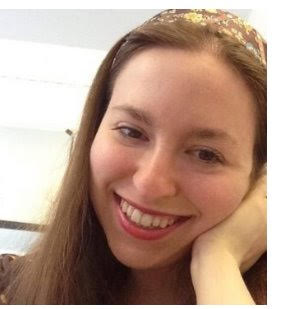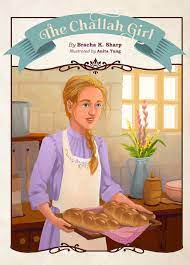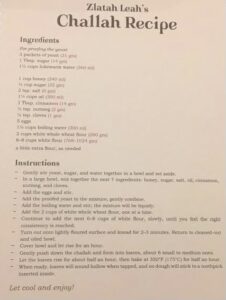Bracha Sharp is an author and poet. Her picture book THE CHALLAH GIRL (Feldheim) is a sweet tale of Zlatah Leah, whose beautiful challah is known throughout her village. But is her challah special enough to bring a smile to the melancholy prince? When not writing, Bracha loves to muse over her memories of ballet, and spend time with her guinea pigs, Norah and Kitty Lou (both named after literary characters). She also loves to read almost anything that comes her way and to spend time in the garden with a mug of green tea and a square of chocolate. Welcome, Bracha!
Tell me a bit about what inspired you to write The Challah Girl?
There were actually quite a few things that came together for me, at the right time and the right place, in terms of inspiration–and those events really helped to plant the seeds for what would eventually become “The Challah Girl”! Although I had many other PB manuscripts written out, they were not in the realm of fairytales, but sometimes, all that’s needed is one spark, and then everything begins to take off! At first, it was actually more of a case regarding who inspired me! Probably one of the nicest things about this picture book’s creation is that the ideas for it had come about because of two wonderful people that I had in my life. It was their encouragement that, unbeknownst to them, sparked the ideas for this picture book–and luckily, I am still in contact with them today. The first inspiration was one of my college English professor’s lectures and classes. During the time when the inspiration for this story came to me, I had taken a former college class not too long before, on the psychology of fairy tales and their meanings. That class was called “Literature of the Self” and until my classmates and I took it, we didn’t actually know that we would be discussing and reading fairy tales! It was actually a wonderful thing to be able to go back to so-called “children’s literature” and look at it from a more adult and psychological point-of-view. From then on, I became more interested in that genre, as a whole, but it wasn’t at the forefront of my mind to use that knowledge in a picture book-related way. It was also wonderful to delve into more about children’s literature, on the whole, during that class–it was fascinating for all of us! So, fairy tales and their meanings were writ large in my mind during that time, and afterwards, when I was working at a small Judaica shop, where one of the most popular items that we sold were challahs, my supervisor came by and said, “Oh, you’re such a challah girl!” As soon as she said that, Divine Inspiration hit–and I basically then-and-there decided to combine both of these inspirations into the basis for my own, original Jewish fairytale.

I love the fairytale quality of the story. How is your work influenced by fairytales?
Thank you so much! Well, before the college class that I took on “Literature of the Self” I hadn’t really thought at all about using fairytales as a device for my picture book manuscripts. And mostly, with regards to my other manuscripts, they wouldn’t have worked, because the context was completely different. I was trying to tell other stories that didn’t deal with that genre and I am still happy with the way that they turned out. However, because of that literature course, the world of fairytales began to open up to me in a completely new light and my writing took on a new paradigm shift, in that sense. In essence, I began to deconstruct the fairytales that I thought I had known and understood in childhood and then I began to apply a more psychological bent to them. This wasn’t very hard to do, and it was usually even quite fun, being that, as an English Major and a Psychology Minor, I was basically doing those mental acrobatics, anyway. I loved the idea of combining the two, and at their heart, good stories can often be very psychologically-based and take a deep-dive into the various characters’ inner worlds. But what made The Challah Girl’s message more pressing for me was that I wasn’t just writing an original fairy tale, but an original Jewish fairy tale and it was important to me to take the original work that had influenced me and to transform it into something, if not entirely new, then at least a deviation from the other cultural fairy tales that I had been studying. I recognized that while all of my picture book characters were going on a journey, and that while all of literature contains journeys, of a sort, I had to make it a bit more clear that Zlatah Leah was going to be going on a heroine’s journey. At it’s heart, however, while I wanted her journey to have a universality and a physicality, I also very much wanted her journey to be an inner one, where a lot of growth and development could take place and where Jewish values could come to the fore. It was therefore important for me to have both that universality and the specificity of Jewish values together, because I knew that the genre of the fairytale could hold up to that–and it did. With regards to a direct fairytale influence, I used a lesser-known variant of the “Cinderella” tale-type called “Donkeyskin” by Charles Perrault–and both “Cinderella” and “Donkeyskin” are known by many, many other names–because in the latter retelling, the protagonist is very outwardly mobile, as opposed to staying more inside the house, and I referenced that by giving Zlatah Leah her own animal helper, which is her donkey, to help carry her on her journey to the palace. However, because I wanted my story to have more of a core focus on particular Jewish values that could also be seen as universal, the protagonist is not fleeing her home, as in the original tale type, but is instead encouraged not only by her family, but by her community. In the end, it becomes a community-wide effort to try to help Prince Isaac, and it becomes an inner journey that Zlatah Leah must take, by not giving up on helping the prince. The inner landscape was thus always in the front of my mind, in terms of inner growth and development, as I wrote the story. There are a lot of inner references to fairytales, both Jewish and not, and Jewish values that I definitely have little literary or other references to in the book, mainly for myself, because it is fun to look back on them and to pick up on that. However, I am always really happy when someone understands them, adds to them in new ways, to create a greater resonance of depth within the book’s storyline, or simply enjoys hearing some of my motivations for certain details. I now joke that I have begun to see fairytale influences everywhere, but as I was writing the manuscript, and while I did a lot of extended research, apart from going back to review my old class notes, I also wanted to bring in more of a Jewish fairytale bent, and the information gleaned from that research was fascinating, as well. I hope to continue to write more manuscripts in this genre, but generally with a Jewish motif. I feel like there is a lot of potential there and that the values and stories that could be tapped into based on that would be almost limitless!

What were your thoughts when you first saw the lovely illustrations by Anita Tung?
I actually could not believe how beautiful they were! I was also extremely impressed by her professionalism, in that she took my notes regarding Jewish dress and the type of imaginative and realm-based lands which I hoped the story would be set in–and she just went with it! It was thus truly a collaboration between author, illustrator, and publishing house in the best way.I was also pleased to see that some of my family members’ suggestions and actual layout designs were incorporated into the overall design of the book, so it was really a family affair, as well. In terms of the overall aesthetic, I especially loved the colors that Anita Tung chose to use for the illustrations. I felt that they perfectly captured the imaginative and fairytale-like qualities of the story, but that they also lent a lovely realism and depth to the characters. That was crucial, because Zlatah Leah had to be seen as a young girl who was real enough to keep readers invested in her story, while also giving the impression that we were traveling through a land that was at once real, but also a little off to the side of reality. It was this duality that I had hoped to have portrayed in the illustrations, and I feel that they certainly were! Lastly, I very much enjoyed the gestures and expressions that she imbued each-and-every character with, particularly the closeup spread of Zlatah Leah’s tears falling into the challah dough, at a crucial moment in the story. I could certainly go on, because I think that Anita Tung’s illustrations brought the overall concept of the story to an elevated level, but suffice it to say, that for a first picture book, I was very, very well-pleased with the quality and care that she took to bring the story to life!
Do you have a special challah recipe? What is your special ingredient?
My special challah recipe would be Zlatah Leah’s, which can be found at the back of the book, but I’m sure that she wouldn’t mind me sharing it here!

Lots of first time challah bakers during the pandemic will love another recipe to try..
Lots of first time challah bakers during the pandemic will love another recipe to try.
Yes – I agree! Thanks for visiting!